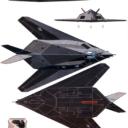Yahoo Answers is shutting down on May 4th, 2021 (Eastern Time) and the Yahoo Answers website is now in read-only mode. There will be no changes to other Yahoo properties or services, or your Yahoo account. You can find more information about the Yahoo Answers shutdown and how to download your data on this help page.
Trending News
do bullets makers use the same powder recipe?
I switched from 180gr back to 165gr (same company, style and caliber of bullet) and wanted to know if the only difference is the size of the bullet. if the powder changed according to the bullet weight then it makes sense. If the powder charge stays the same, then either 165 is a good round while the 180 is underpowered or the 180 is the more suitable round and the 165 is being pushed to fast.
whats the deal?
7 Answers
- ?Lv 41 year ago
NO. And you mean CARTRIDGES, not bullets. Bullets are the projectiles. Cartridges are the entire assembly --bullet, brass case, powder, and primer.
As the bullet size increases, so likewise does the pressure if the powder charge remains the same. Using slightly less powder with heavier bullets keeps the pressure within safe limits. There is usually not much compromise in the ballistics -- but the bullets are typically matched to the game animal the hunter is attempting to shoot. A 180 grain bullet, and the somewhat hard to find 220 grain bullet is what a hunter might use on elk, grizzly bear, or moose -- if, for example, they chose to use a .30-06. But a 130 grain or 150 grain bullet would be too light for these purposes.
- 1 year ago
I would think there are different recipes for different grain bullets of the same caliber. If you were an avid hotrodder and changed the compression ratio of the pistons would you slow the burn rate of the fuel not to pre ignite? You would if winning was a priority. The bullet is like the piston and the higher dome raises the compression ratio in the combustion chamber which is like the cartridge case. Retardants are added to the propellants to slow the burn rate down with graphite coatings as well as different shapes to the granules. Competitive ammo makers will provide tiny secret ingredients to their formula for the best performance and just like the Coca Cola ingredients are trade secrets and well kept.
- USAFisnumber1Lv 71 year ago
No. They are competing with each other so each one tries to make the most accurate, hardest hitting, lethal round they can. They change primers, powders, bullet weights and shapes, even what they make the case and bullet out of.
- Mr.357Lv 71 year ago
Obviously the powder charge is probably different. You don't know much about smokeless powder. The more pressure it is under, the FASTER it burns. If you hand load and use two different bullet weights and the same powder, you ALWAYS use less powder with the heavier bullet to prevent exceeding the maximum pressure.
- daniel gLv 71 year ago
No. there are many mixes of arms propellant.
Some ammo makers make their own, so depends.
There are loading charts that are standard for factory ammo, that is usually what OEM ammo follows.
I did a lot of .308 loading using MIL-STD propellant. 165 Gn, I would load 1/2 Gn less powder than recommended for the load. shooting was long distance target to 900 yards.
Hunting load, you might go 180 Gn or more, and a hotter load in powder.
- falconry2Lv 71 year ago
Several physical properties and physics interactions are affected when you change bullet weights for the same case. First is a 180-grain bullet will be longer, simply because you can't increase the diameter, so that alters Ballistic Coefficient, sectional density, and barrel harmonics along with a difference in how the landes engage the bullet from the olgive tangent to the base/boat tail break. Often a heavier bullet stabilizes well because of the barrel twist also being more suited to that weight. For example, many 30-06 and other .30s can shoot 165 or 180 grain equally well when worked up properly. 308 Win tends to stabilize 150 and 165 well, some do OK with 180 +, others don't. That goes back to length of the bullet; to maintain a SAAMI Cartridge Overall Length (COL) you have to seat the bullet deeper into the neck, which is shorter than other cartridges so for many powders that produces a compacted load or powder impingement, even with a lesser but same powder charge. 30-06, most 300 Mags have a longer neck so impingement isn't an issue. Some rifles you can gauge the throat/landes engagement point and there is a little leeway above SAAMI COL. So, that's some of the length change impacts.
The weight of the bullet changes the inertia, changing the energy needed to motivate the bullet, normally inversely to the weight using the same powder. You would think to use more powder for 180 than 165 but the inertia change means the pressure curve would peak before the bullet moved enough to relieve the 50,000 PSI or Cups of pressure and you can blow a primer pocket, swell a case too much, or even rupture a case. Most often heavier bullets will use LESS of the same powder, so a 180 uses less than 165s because of pressure curve/inertia matching better. That is also why changing powders to match the pressure curve and not over-pressure the cartridge can make sense too. The powder burn rate and pressure affect the barrel harmonics, along with the other factors, which is why COL, powder selection and load weight/case density matter, so that trickles back into powder choices and impingement for 308 Win for example. Also why there is a range offered for most cartridge loads for burn speed and density is listed for the min/max powder charge. I use IMR 4350 in my 30-06 with 165s, I tried H4350 and couple other powders but the IMR gives me sub-MOA groups.
Now, I look at a bullet performance matrix, for my 30-06 and 300 WSM. I find 165 grain is a great mix of accuracy, velocity, consistent COLs and with using premium bullets I never worry about terminal performance. A 180 could probably be just as accurate, but I never needed to work up that load; it would provide added momentum at distance with a slight velocity tradeoff at some specific ranges but again using a great bullet makes moving up a moot point for me, you might have other considerations.
If you buy factory loads, for the most part, you trade speed for sectional density and momentum going from 165 to 180, but even speed balances out if you extend the range often. As above leads to, some rifles seem to shoot a certain weight better based on the barrel harmonics and COL/pressure, others aren't as picky if the box is consistent. That is what reloading helps with, I KNOW my COLs are all the same and matched to my rifles and the powder choice and density provide the closest same harmonic in the barrel so the bullet releases from the crown at the same place in the vibration of the barrel.
Also, factory loads aren't the same as reloaders use, the factory can mix powders to get a specific blend for a bullet weight because they have the testing gear and accept the liability of that loading. So they use proprietary formulas and even powders not available to reloaders.
- L.N.Lv 71 year ago
Generally speaking, in a maximum load for a given cartridge using the same powder with the heavier bullet, there would be less powder used with the heavy bullet. It is generally safe to use a lighter bullet of the same design in a worked up load, but not safe to use a heavier bullet as it would cause higher chamber pressure.
The lighter bullet accelerates faster down the barrel leaving more room for gas expansion at most points in the burn cycle yielding lower peak pressure. To improve the performance of the load, powder charge could be increased or a faster powder could be used.






